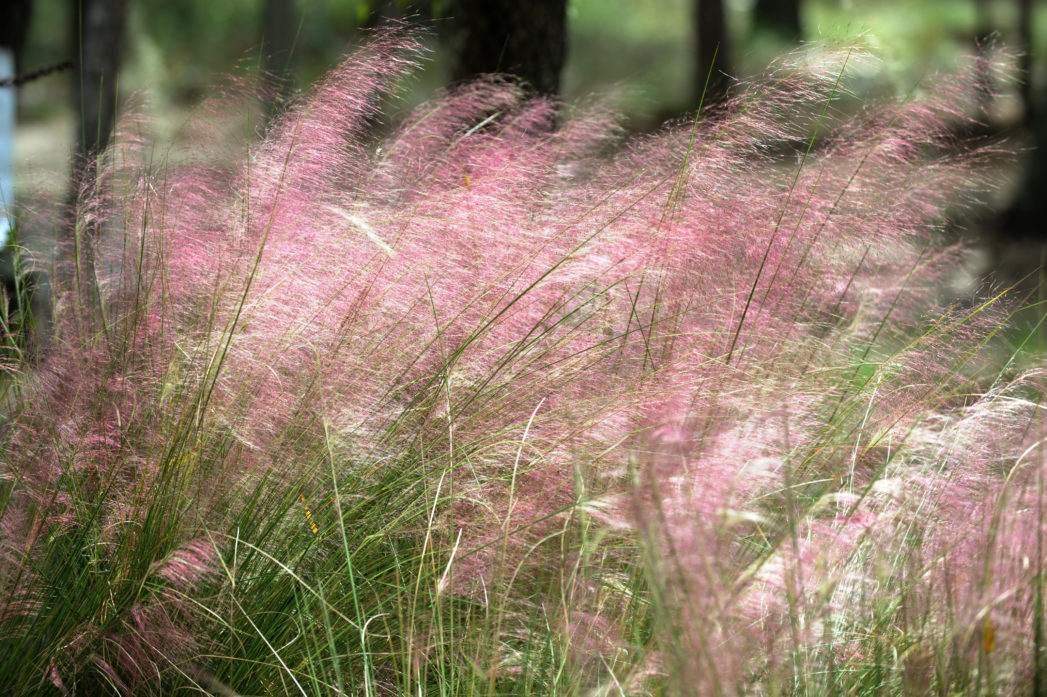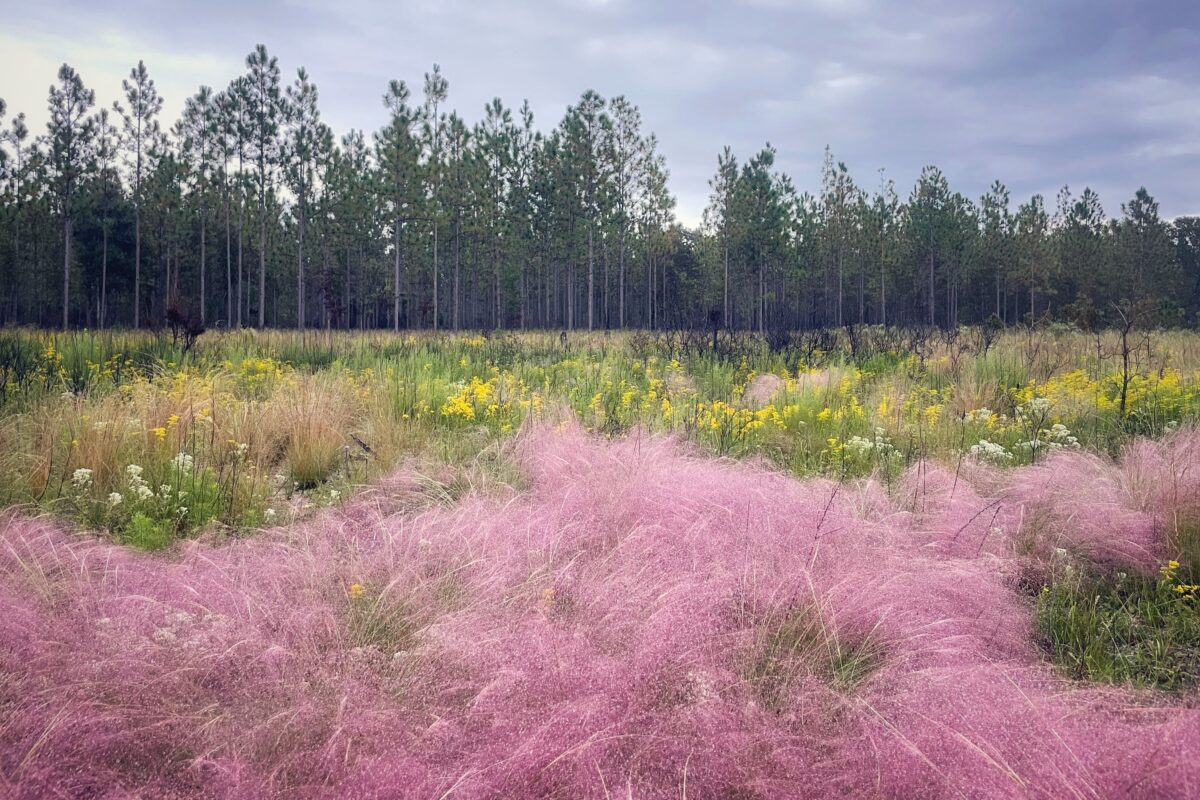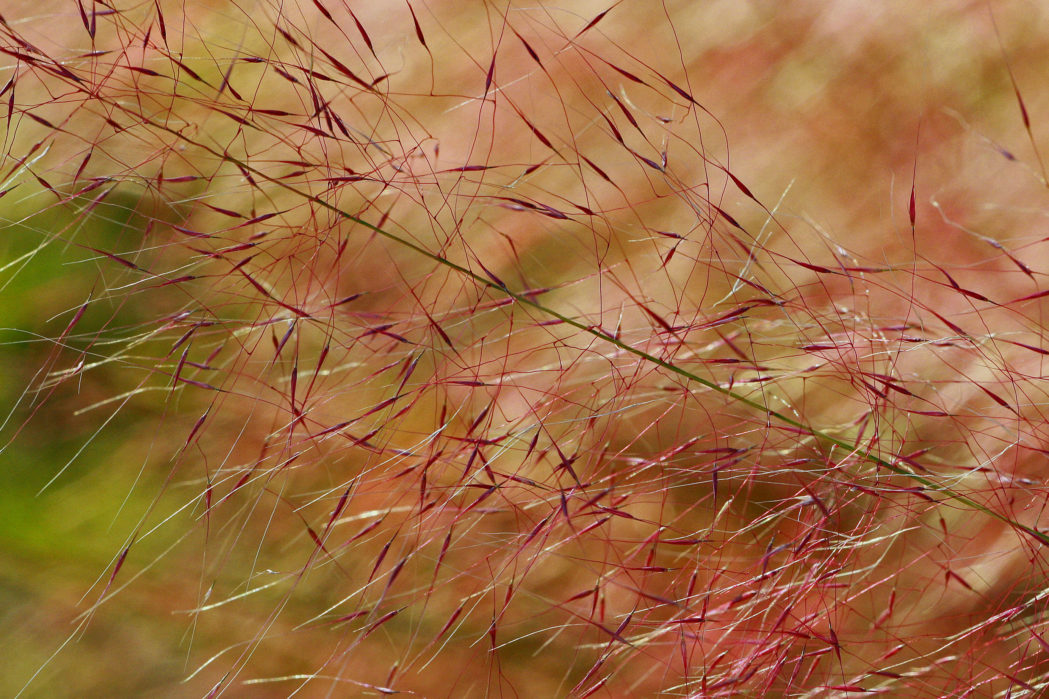Muhlygrass
Pictured above: Muhlygrass (Muhlenbergia capillaris) by Bill Randolph. Click on terms for botanical definitions. View post as a PDF.
Muhlygrass (Muhlenbergia capillaris) is a robust, perennial, clump-forming grass that puts on a stunning fall display. It occurs naturally in coastal grasslands, hammocks and strands, beach dunes, sandhills and pine flatwood. Its clumping habit provides excellent cover for wildlife.
Muhlygrass flowers are pink to purplish-red and tiny but profuse. They are born in long, delicate panicles. Leaves are mostly basal and may reach 2 feet or more in length. Leaf blades are flat and thin but roll inward and become narrower toward the leaf tip. Stems are thin and glabrous. The fruit is a tiny caryopsis.
The genus name Muhlenbergia honors German-American amateur botanist Gotthilf Heinrich Ernst Muhlenberg (1753-1815). The species epithet capillaris is from the Latin capillus, or “hair,” and aris, which means “of or pertaining to.” It may refer to the fine, hairlike appearance of the inflorescence or the capillary- or tube-like form of the panicle branches or leaves.
Family: Poaceae (Grass family)
Native range: Nearly throughout
To see where natural populations of Muhlygrass have been vouchered, visit florida.plantatlas.usf.edu.
Lifespan: Perennial
Soil: Moist to dry, mildly acidic, sandy soil
Exposure: Full sun to partial shade
Growth habit: 1–4’+ tall, equally wide
Propagation: Seed
Florida regions of landscape suitability: North, Central, South
Garden tips: Muhlygrass is an excellent plant for most Florida landscapes. Its foliage is attractive all year, and its fall display of color is nothing short of spectacular. En masse, it produces a purplish-pink haze. It is also beautiful as a specimen plant. Muhlygrass is hardy, drought tolerant and mildly salt and wind tolerant. It self-seeds and can maintain its population for many years. It can also serve as background for fall’s blazing stars or Rayless sunflower.
Muhlygrass is available from nurseries that specialize in Florida native plants. Visit www.PlantRealFlorida.org to find a nursery in your area.
Learn more about Muhlygrass from the Florida Native Plant Society and the Institute for Regional Conservation.



